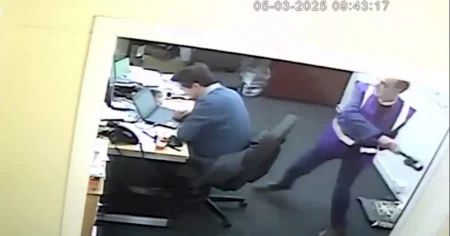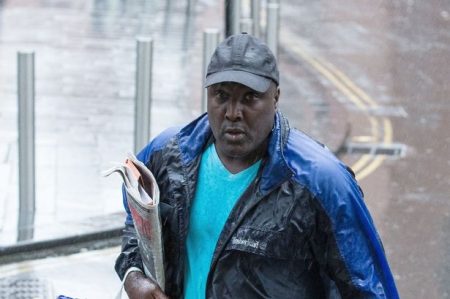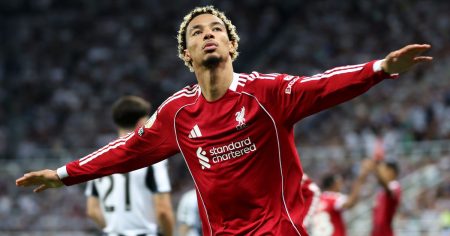Black Eye Friday, the final Friday before Christmas, has gained notoriety as a night of excessive revelry and, unfortunately, often chaos. This unofficial holiday, also known as Mad Friday or Builders’ Friday, marks the beginning of the Christmas weekend for many, prompting office parties, festive gatherings, and a general surge in social activity. While many embrace the opportunity to celebrate and unwind before the holiday proper, the combination of increased alcohol consumption and heightened emotions has historically led to a spike in public disturbances, accidents, and pressure on emergency services. The name itself, “Black Eye Friday,” grimly alludes to the potential for fights, injuries, and the general mayhem that can unfold as the night progresses. While the moniker is undoubtedly sensationalized, it serves as a reminder of the potential consequences of unchecked revelry. The phenomenon isn’t unique to a single city or region; it manifests across the UK and in other parts of the world where pre-Christmas celebrations are common.
The contributing factors to the Black Eye Friday phenomenon are multifaceted. The festive season itself is often a period of both heightened stress and excitement. Financial pressures, family obligations, and the general rush of the holidays can contribute to individuals seeking release through alcohol and socializing. The final Friday before Christmas offers a seemingly perfect opportunity for this release, as many workplaces close early or hold festive gatherings, providing a sanctioned environment for indulgence. This combination of pre-existing stress and readily available alcohol fuels a volatile mix. Moreover, the sheer volume of people participating in the festivities contributes to overcrowding in public spaces, straining the capacity of public transport and increasing the likelihood of confrontations. The extended opening hours of pubs and bars further facilitate excessive alcohol consumption, exacerbating the potential for disruptive behavior.
The consequences of Black Eye Friday extend beyond individual mishaps. The strain on emergency services is significant. Hospitals experience a surge in admissions related to alcohol-related injuries, illnesses, and accidents. Police forces are stretched thin dealing with public disorder, fights, and traffic incidents. Ambulance services struggle to respond to the increased demand, leading to potential delays in critical care situations. This surge in demand not only impacts the immediate response to incidents but also diverts resources away from other emergencies, creating a ripple effect across the healthcare system. The increased workload and pressure on emergency service personnel also contribute to burnout and stress within these essential services.
Beyond the immediate effects on emergency services, Black Eye Friday also has broader societal implications. The public perception of the evening as a night of chaos and disorder can negatively impact community spirit and create a sense of unease. The increased visibility of public intoxication and disruptive behavior can contribute to a feeling of unsafety, particularly for vulnerable members of the community. The cleanup efforts required in the aftermath, including dealing with litter, vandalism, and damage to public property, add to the financial burden on local authorities. Moreover, the media’s focus on the negative aspects of Black Eye Friday often perpetuates the cycle of anticipation and subsequent disorder, creating a self-fulfilling prophecy.
Despite the negative connotations associated with Black Eye Friday, it is important to acknowledge that the vast majority of people celebrating the festive season do so responsibly. Many individuals enjoy the opportunity to socialize with friends, colleagues, and family without incident. The focus on the negative aspects of the evening often overshadows the positive elements of community celebration and festive spirit. Numerous individuals and organizations actively promote responsible drinking and safe celebrations, working to mitigate the potential risks associated with excessive alcohol consumption. Campaigns promoting designated drivers, encouraging moderation, and providing information on the dangers of binge drinking aim to raise awareness and foster a culture of responsible enjoyment.
Looking ahead, addressing the challenges of Black Eye Friday requires a multifaceted approach. Encouraging responsible drinking through public awareness campaigns and education is crucial. Collaborations between local authorities, law enforcement, and the hospitality industry can promote responsible serving practices and ensure that establishments maintain a safe environment. Improving public transport options and ensuring adequate staffing of emergency services can also help manage the increased demand during the festive period. Ultimately, fostering a culture of responsible celebration, where the focus is on enjoyment and togetherness rather than excessive indulgence, is key to ensuring that Black Eye Friday, and the festive season as a whole, remains a time of joy and celebration for everyone. This requires a shift in societal attitudes, promoting moderation and respect while emphasizing the importance of personal responsibility in ensuring a safe and enjoyable festive season.














